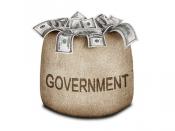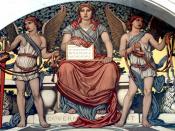needs a little work could use a few more examples
here's one on the deficit for those economics classes
Subject: the deficit good or bad
Deficit Spending
"Spending financed not by current tax receipts, but by borrowing or
drawing upon past tax reserves." , Is it a good idea? Why does the U.S.
run a deficit? Since 1980 the deficit has grown enormously. Some say its
a bad thing, and predict impending doom, others say it is a safe and
stable necessity to maintain a healthy economy.
When the U.S. government came into existence and for about a 150 years
thereafter the government managed to keep a balanced budget. The only
times a budget deficit existed during these first 150 years were in
times of war or other catastrophic events. The Government, for instance,
generated deficits during the War of 1812, the recession of 1837, the
Civil War, the depression of the 1890s, and World War I.
However, as
soon as the war ended the deficit would be eliminated and the economy
which was much larger than the amounted debt would quickly absorb it.
The last time the budget ran a surplus was in 1969 during Nixon's
presidency. Budget deficits have grown larger and more frequent in the
last half-century. In the 1980s they soared to record levels. The
Government cut income tax rates, greatly increased defense spending, and
didn't cut domestic spending enough to make up the difference. Also, the
deep recession of the early 1980s reduced revenues, raising the deficit
and forcing the Government to spend much more on paying interest for the
national debt at a time when interest rates were high. As a result, the
national debt grew in size after 1980. It grew from $709 billion to $3.6
trillion in 1990, only one decade later.


